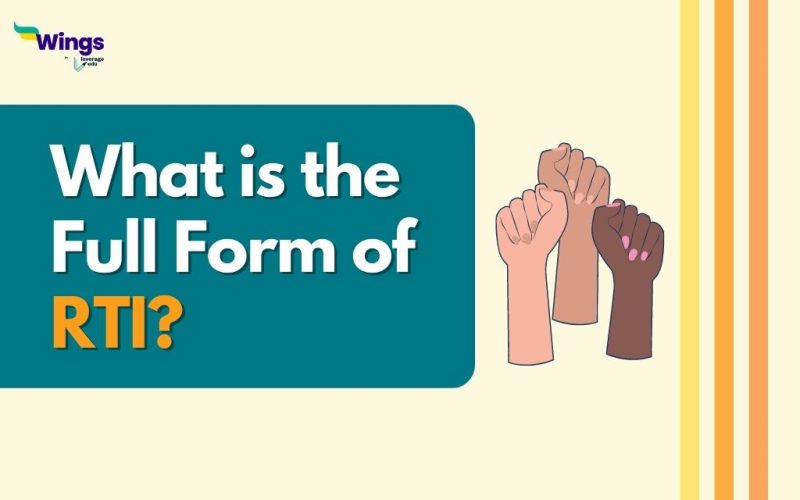The term RTI full form stands for Right to Information. The RTI Act, 2005, which was approved by the Indian Parliament on June 15, 2005, and went into force on October 12, 2005, grants the right to information. The RTI aims to safeguard access to data under public authority control in order to improve accountability and transparency in the operation of public authorities. Let us read more to find the details of RTI full form –
Table of Contents [show]
Areas of RTI
The Act is applicable to the entirety of India. The Jammu & Kashmir Right to Information Act was already in force in the state of Jammu and Kashmir. However, following the deletion of Article 370 of the Indian Constitution, the Union Territories of Jammu and Kashmir and Ladakh were subject to the Central Act. Included are all constitutional authorities, such as the executive, legislatures, and judiciaries, as well as any organization or body founded or established by an act of a state legislature or a Parliament.
Objective of RTI
A law passed by the Indian Parliament called the Right to Information (RTI) Act attempts to give citizens access to government data. On October 15, 2005, the RTI Act went into effect after being approved by the Parliament in 2005. The RTI Act offers a method for requesting information from a public entity, which must respond within 30 days.
A public authority must respond to any information requests made under the RTI Act within 30 days. A procedure for challenging a public authority’s denial of information is also provided by the RTI Act.
Must Read: What is the Full Form of SIC?
Uses of RTI
Below are a few of the uses of RTI:
- To learn more about the effectiveness of the public authority
- To gain access to the public authority’s records
- To request data in a specific format
- If you are unhappy with the response to your information request, you should complain.
- To request a review of the public authority’s decision about your information request
- To learn more about the factors that led the public authority to make a particular choice.
- To learn more about the steps taken by the public authority when making a specific choice
- To learn more about the public authority’s rules and regulations
Who can apply for an RTI request?
Any person living in India is eligible to submit an RTI request. There is no requirement to provide a reason for seeking the information and your identity remains confidential throughout the process.
Also Read – What is the full form of CIC?
How to submit an RTI request?
You can submit an RTI request through the Internet, by mail or in person. The application form for RTI is accessible on the website of the Central Information Commission (CIC).
- This form is in PDF format and can be downloaded.
- It requires you to enter your name, address, and contact information.
- Additionally, you need to specify the public body you are inquiring about, the reason for your request, the exact details you are looking for and the relevant dates.
- You must also sign an affidavit affirming the accuracy of the information you are providing.
- A sample RTI application is available on the CIC’s website. After completing the form, you can submit it online, by mail, or in person.
- A fee is required for submission. The completed form should be forwarded to the Public Information Officer (PIO) of the relevant public body.
- Should you not receive a response within the specified timeframe, you have the option to file an appeal with the Information Commissioner.
Popular Full Forms
We hope this blog has helped you understand the RTI full form and everything related to it. If you want to know more, find the 300+ full forms list on our blog. In the world of short forms, you can rely on the Leverage edu page to know about more full forms like this! Connect with us study abroad experts to achieve your international dream today!
 One app for all your study abroad needs
One app for all your study abroad needs















 45,000+ students trusted us with their dreams. Take the first step today!
45,000+ students trusted us with their dreams. Take the first step today!
